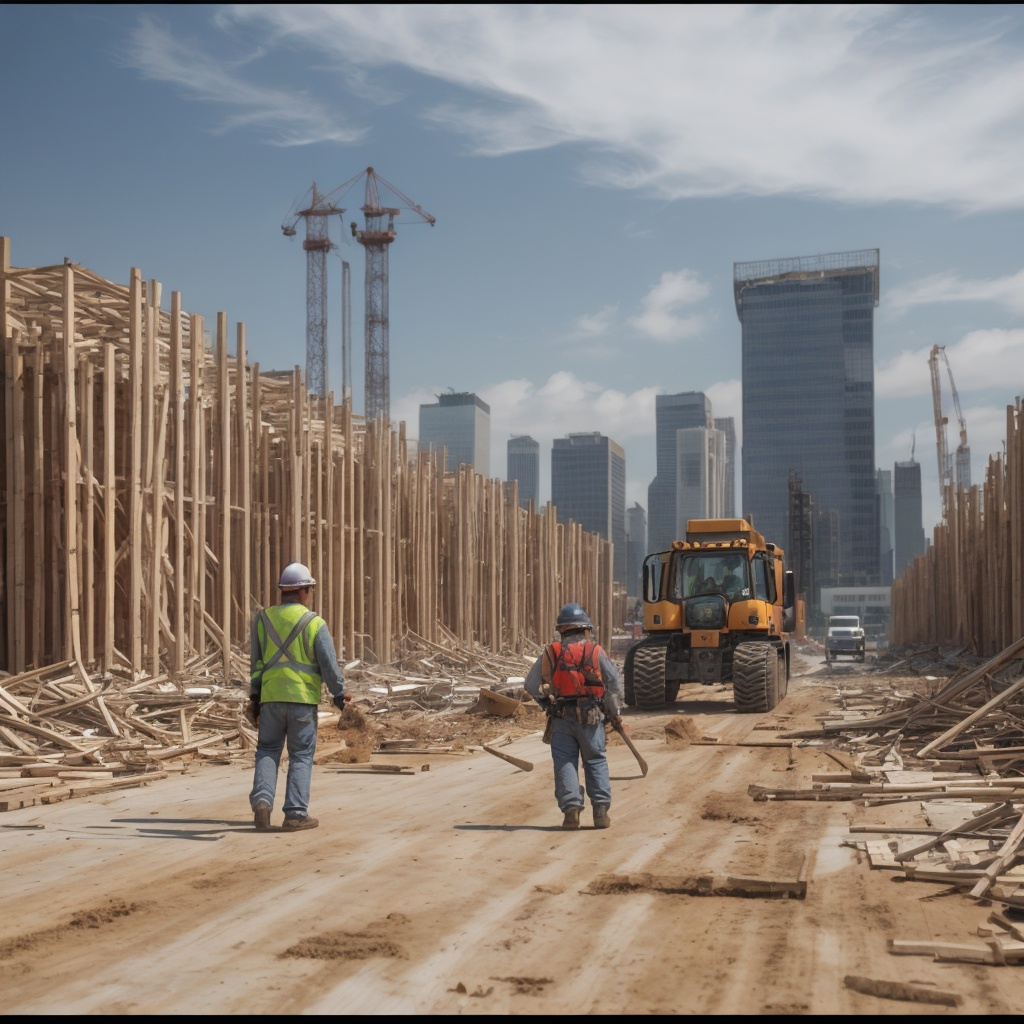Summary
The Crucial Alert: How New Tariffs Might Surge Home Prices and Hinder Buyer Opportunities is a comprehensive examination of the implications of tariffs on the housing market. Tariffs, taxes or duties imposed on imported or exported goods, have been a vital part of global trade policy since they were first introduced in the United States in 1798. While they were originally designed to protect domestic industries and raise federal revenue, tariffs can have unintended ripple effects across different sectors, including real estate. In the context of the housing market, tariffs, especially on construction materials such as steel and aluminum, can lead to a significant surge in home prices and potentially hinder opportunities for prospective home buyers.
Tariffs on imported construction materials are known to considerably raise the cost of these materials. New proposed tariffs could increase these costs by an estimated $3 billion to $4 billion, directly influencing housing market dynamics through increased construction costs, supply chain disruptions, and shifts in housing affordability. These additional costs are often passed down to developers, contractors, and ultimately, homebuyers, exacerbating existing issues of housing affordability and potentially slowing down the overall housing market.
The impact of tariffs varies across industries, with the construction industry feeling immediate effects due to price changes in building materials. For instance, an increase in tariffs on Canadian softwood lumber led to a rise in construction costs, potentially causing supply chain bottlenecks and short-term price hikes. Additionally, tariffs can have far-reaching effects on the economy by discouraging new development, increasing consumer costs in the form of higher home prices, and contributing to supply chain issues in the construction industry.
While tariffs serve various purposes, their broader economic implications can be profound and far-reaching. They can significantly impact consumer prices, supply chains, and the competitiveness of various industries. Detailed analyses and case studies reveal these impacts, especially in the construction and housing industries, highlighting the potential risks and challenges that tariffs pose to these sectors. Government policies and proposed measures to mitigate these impacts are continuously monitored and assessed to inform individuals and aid them in making informed decisions in the real estate market.
Overview of Tariffs
Tariffs are a key tool in global trade policy and have been instrumental in shaping economic relationships between nations. They are essentially taxes or duties imposed on imported or exported goods. Introduced in the United States in 1798, tariffs were primarily used to raise federal revenue and boost domestic competitiveness. From 1798 to 1913, tariffs accounted for 50% to 90% of the federal income, a stark contrast to today’s figure of only 2%.
Tariffs serve various purposes including protecting domestic industries, generating government revenue, and at times, aiming at geopolitical strategic objectives. However, their implementation can often lead to higher consumer prices, disruption of supply chains, and pose challenges to U.S. competitiveness. This compels businesses to adopt adaptive strategies to mitigate the impacts.
In modern economic context, industries like technology and healthcare are differently impacted by tariffs due to their focus on digital products and domestic production respectively. Tariffs can significantly influence the price of imported goods. The additional cost of import due to tariffs is typically absorbed by the importer or passed on to the end consumer of the product.
Over the years, new data and research have begun to examine the impact of tariffs, particularly on steel and other U.S. manufacturing industries. The application of tariffs on goods used as inputs into production can intensify losses as price distortions pass through the supply chain. This dynamic often results in job losses in steel-related and other impacted industries.
The broader economic implications of tariffs extend to various sectors, including real estate. Understanding these implications requires a detailed analysis of key economic theories and expert assessments. Tariffs, while originally designed to protect domestic industries and generate government revenue, often have unintended ripple effects across sectors. These unintended consequences can lead to significant shifts in the housing market, such as a surge in home prices and potential hindrances for prospective home buyers.
Impact of Tariffs on Construction Materials
Tariffs on imported construction materials, including steel, aluminum, and home appliances sourced from countries like China, Canada, and Mexico, have been shown to significantly increase the cost of these materials. Proposed new tariffs are projected to raise the cost of imported construction materials by an estimated $3 billion to $4 billion. Inflationary pressures and global factors, including trade uncertainty, are key drivers of this trend.
Rising Construction Costs and Housing Affordability
The rising cost of building materials directly impacts the affordability of new housing. Higher construction costs get passed on to home buyers in the form of higher prices, making it increasingly difficult for people to afford new homes. This exacerbates existing housing affordability issues and slows down the overall housing market.
Industry-Specific Impact
In the construction industry, increased prices reach builders more quickly when market prices are increasing. Changes in softwood lumber prices, for example, directly impact the price of a new home. The U.S. Commerce Department’s increase in tariffs on Canadian softwood lumber from 8.99% to 17.99% in November 2021 resulted in higher prices. These increased costs can potentially lead to supply chain bottlenecks that result in short-term price hikes. These tariffs could push home construction costs up by 4% – 6% over the next 12 months.
Unintended Consequences
The effects of tariffs on the housing market extend beyond the increase in construction costs. Tariffs on lumber and other building materials increase the cost of construction and discourage new development, with consumers ending up paying for the tariffs in the form of higher home prices. Additionally, supply chain issues, such as part shortages and shipment delays, also contribute to the challenges facing the construction industry.
Case Studies
For example, the Trump administration imposed tariffs on steel and aluminum imports in 2018 and again in 2023, with serious consequences for manufacturers of trucks, appliances, and construction equipment, who had to scramble to find U.S. substitutes. This move also inadvertently led to an increase in prices of a wide range of consumer products, as almost half of the aluminum and nearly a quarter of the steel supply in the U.S. are imported.
An increase in construction costs can result in potential home buyers opting for older, resale homes instead of newly built ones, which in turn can drive up prices in the existing housing market. Moreover, a rise in housing prices can exacerbate the existing affordability crisis and cause a slowdown in housing construction.
Additional tariffs targeted at preventing the import of goods made with steel and aluminum led to a production decrease in downstream industries affected by higher input prices. These tariffs also had a relatively small impact on employment in steel-producing industries, demonstrating a limited benefit from the tariffs.
Government Policies and Proposed Measures to Mitigate Impact
There are estimates that suggest increased costs due to these policies may result in reduced housing supply or additional burdens for homebuyers . These tariffs also risk reducing economic growth depending on the extent of retaliation from affected countries like Canada, Mexico, and China . Such circumstances could lead to the gradual weakening of the US economy, already strained due to high interest rates, and can potentially affect the housing demand due to significant labor market deterioration .
Several key tariff policies have had direct or indirect impacts on the housing market over the years. In Canada, for example, the Canadian Institute of Plumbing and Heating, along with the Mechanical Contractors Association of Canada, raised concerns about the downstream effects of tariffs, which included increased housing costs and supply chain issues .
While most of the tariff impacts are felt in the new housing construction sector, the existing market is also susceptible to these effects . Therefore, it is essential to stay updated on how tariff proposals might influence new home construction and housing market trends .
Different organizations continue to monitor these tariff and trade policy developments. Their aim is to help individuals understand these changes better and make informed decisions in the real estate market . To lessen the impact of these policies on purchasing decisions, it is recommended that buyers remain aware of the changing world of tariffs .
The content is provided by Harper Eastwood, Financial Pulse Now
























